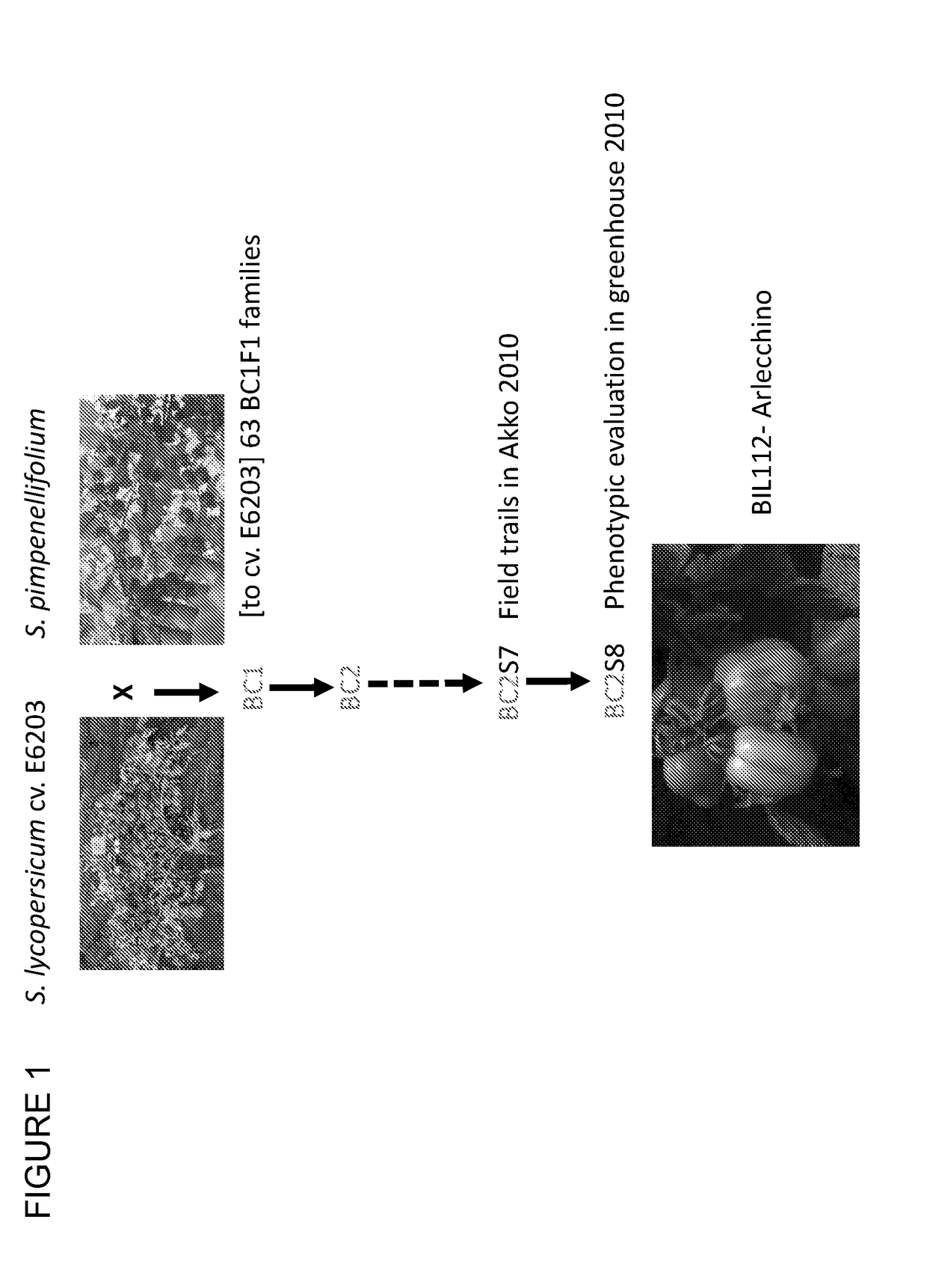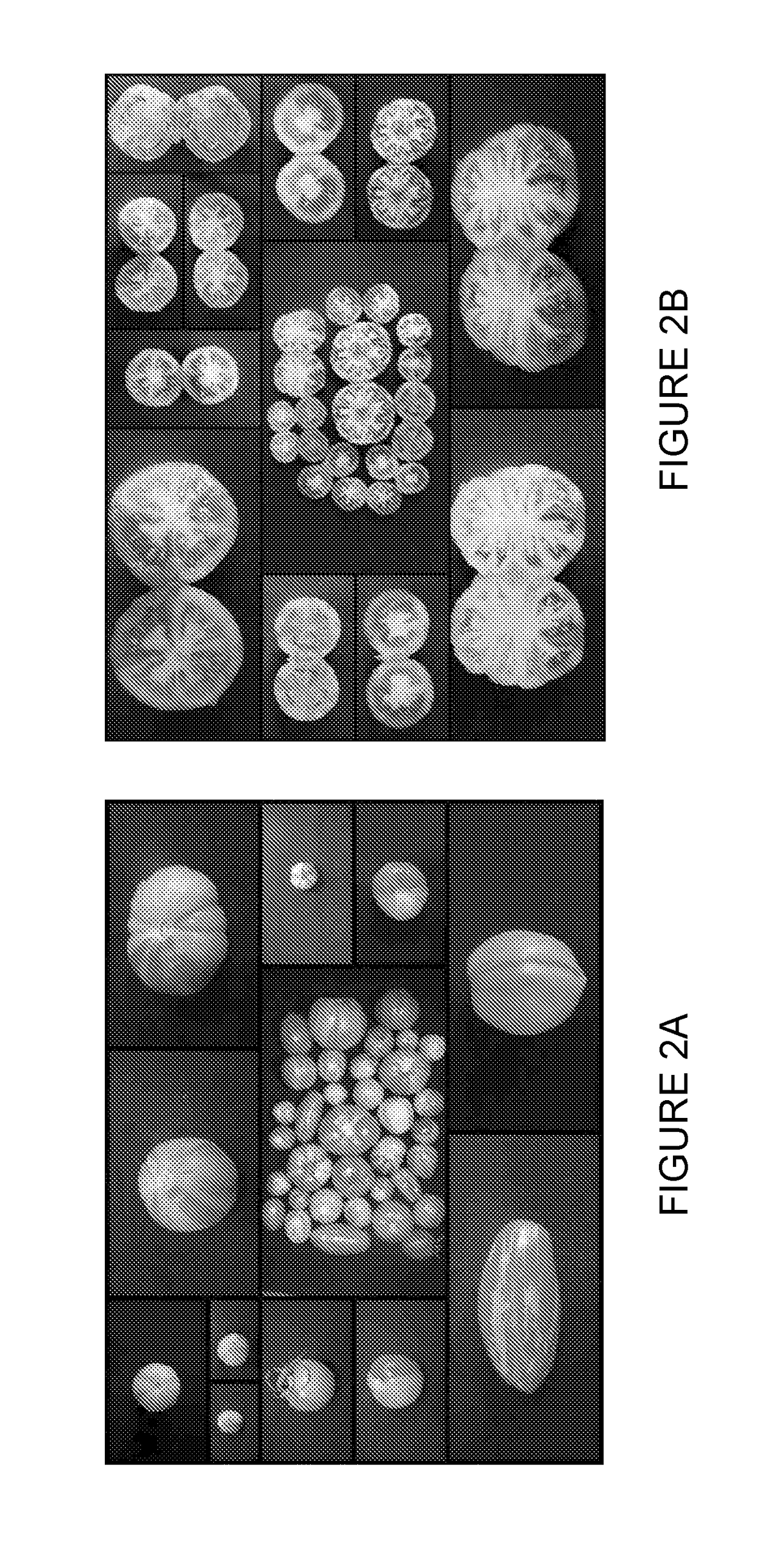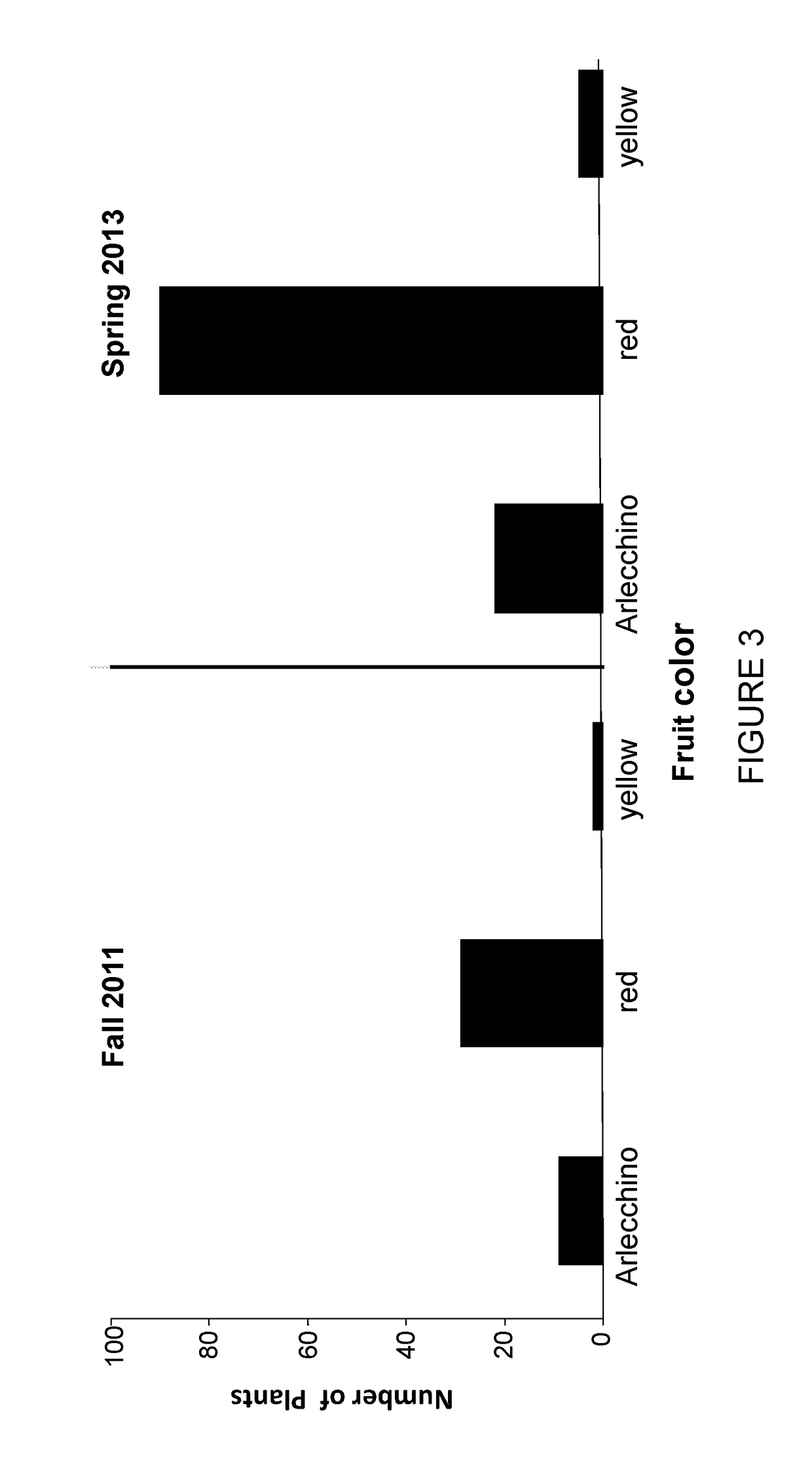Tomato plants having fruit with yellow and red segments
a technology of yellow and red segments and tomatoes, applied in the field of tomatoes, can solve the problems of lowering the chance of obtaining better gene and allelic combinations, affecting the quality of tomato plants, and the frequency of spontaneous mutants is very low
- Summary
- Abstract
- Description
- Claims
- Application Information
AI Technical Summary
Benefits of technology
Problems solved by technology
Method used
Image
Examples
example 1
ome Backcross Inbred Lines (BILs)
[0139]The Solanum pimpinellifolium BILs were constructed from a cross between a small red-fruited self-compatible accession of the wild species Solanum pimpinellifolium (designated LA1589) and the processing-tomato, inbred variety, cv. E6203 (TA209) (S. lycopersicum) (Grandillo S and Tanksley S D. 1996. Theor. Appl. Genet. 92: 935-951). During the construction of BIL from both species, early generations were evaluated for yield associated traits, as a part of the advanced backcross (AB) QTL studies (reviewed by Grandillo S et al., 2007. Theor. Appl. Genet. 92: 935-951) and also for various morphological traits and biochemical properties. The S. pimpinellifolium BILs are composed from 178 lines and the genetic map of this resource was constructed from 4008, genome anchored, SNP markers that were found to be polymorphic between the wild species S. pimpinellifolium and the recurrent parent cv. E6203. The markers were divided into 873 bins with an averag...
example 2
chino Mutation
[0140]The creation of the interspecific BIL population from Solanum pimpinellifolium and Solanum lycopersicum resulted in de novo formation of mutations within the BIL population. A single plant having an unstable fruit color phenotype was identified in BIL#112. The plant was produced during the year of 2010 (within the BC2self10 generation, FIG. 1 and the observed phenotype has not been detected previously in the various variety collections.
[0141]This unique mutant was characterized by parallel color bands of yellow and red, which paint the fruit longitudinally on the external epidermis (FIG. 2A) but importantly extends into the flesh (pericarp), seeds jelly and placenta (FIG. 2B). Hitherto, many mutations resulting in yellow tomato fruit have been identified; however, none of the mutations show yellow-red stripes or segments throughout the fruit cross, disclosed herein for the first time. Another characteristic of this mutant is that there is no observable phenotypic...
example 3
onfiguration of the Arlecchino Phenotype
[0144]The results described above indicated that the Arlecchino phenotype is recessively inherited as fruit of F1 plants derived from the cross of BIL#112 and TA209 and other wild type (WT) cultivars were found to be completely red. Phenotypic complementation was also found in F1 plants derived from crosses of BIL#112 to the tangerine mutation e3406m2 and the zeta mutation e2083m1. Only in crosses of plant having the Arlecchino phenotype two independent mutations having the phenotype yellow flesh (r / r; defective in the Phytoene synthase 1 gene (Psy1) showed lack of complementation and the fruit showed a mild stripped phenotype (Table 2). These results suggest that Arlecchino is possibly allelic to yellow flesh.
TABLE 2Allelism tests of the Arlecchino phenotypeE6203e2083m1(TA209)M82e3756m2LA2997e3406m2(zeta / Line(R / R)(R / R)(r / r)(r / r)(t / t)zeta)BIL 112RedRedWeakWeakRedRedArlecchinoArlecchinoArlecchino
PUM
| Property | Measurement | Unit |
|---|---|---|
| yellow | aaaaa | aaaaa |
| nucleic acid sequence | aaaaa | aaaaa |
| nucleic acid | aaaaa | aaaaa |
Abstract
Description
Claims
Application Information
 Login to View More
Login to View More - R&D
- Intellectual Property
- Life Sciences
- Materials
- Tech Scout
- Unparalleled Data Quality
- Higher Quality Content
- 60% Fewer Hallucinations
Browse by: Latest US Patents, China's latest patents, Technical Efficacy Thesaurus, Application Domain, Technology Topic, Popular Technical Reports.
© 2025 PatSnap. All rights reserved.Legal|Privacy policy|Modern Slavery Act Transparency Statement|Sitemap|About US| Contact US: help@patsnap.com



